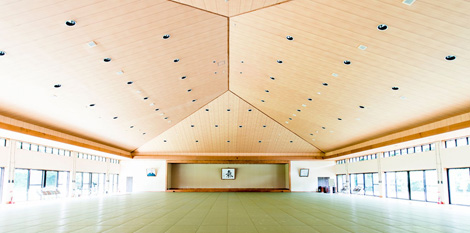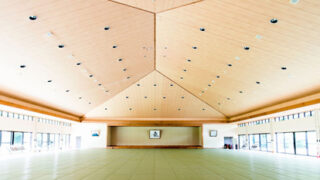This week, I went to the “Ivo Pogorelich Piano Recital”. I won’t go into details about what kind of pianist he is, but the performance was on another level, and I was left speechless at the quality of sound, which was unlike anything I had ever heard before.
What impressed me was the “ma” (space/pause/seishi) between his polite greeting/bow and the start of his performance. It was extremely natural and did not give the audience time to prepare for the performance. The performance began so smoothly that before I knew it, I was already drawn into it, and I had the strange sensation of becoming one with the player.
I sometimes get a similar feeling with my seminar participants. When that happens, the participants are very responsive [to my teaching]. The desire to impart knowledge is important, but if we try too much to teach/impart knowledge, the message to the other person becomes terribly shallow.
When a boundary is created between the “person imparting knowledge” and the “person receiving the knowledge”, then the feeling of oneness between them is lost as Ki stops flowing. A sense of excitement and Kizuki (insight/realization) is created when ki is flowing; there is oneness and no boundaries.
To use Shinshin Toitsu Aikido technique as an example, the moment we take a stance to “try to throw” our opponent/partner, we are separated into “the thrower” and “the thrown” and they end up colliding with each other. Only when we are one with our opponent/partner, can we guide and throw them.
Perhaps Mr. Pogorelich had no intention of “making people listen,” but simply shared the same time and space (ma) with the audience through his piano performance.
As part of one project I accepted some time ago, I was asked to have a dialogue/interview with one of Japan’s leading painters. All I could do really was to simply share the experiences I had accumulated, but I was constantly thinking, “What can I communicate/ impart knowledge to the painter through this dialogue?” However, I soon realized that my Ki was not flowing and I was struggling.
Just then, I received a casual message from an actor who was a friend of mine. He said, “I would be very interested in hearing about the chat between the painter and Tohei sensei!”
The word “chat” [in his email] caught my attention immediately.
It seemed that my desire to “communicate/impart knowledge” to the painter was so strong that I was preparing myself too much. The desire to “communicate/impart knowledge” was important, but “trying to communicate/impart knowledge” was not necessary at all. Instead of trying too hard intentionally, I realized I can just chat with the painter and share what we each felt while our Ki is flowing naturally without effort.
Mr. Hori Takeo, the founder of a major entertainment production company/talent agency, called “Hori Pro”, said that there is really nothing to learn from people who have an intention to try to teach us. I didn’t understand what he meant at first, but now I think I do.
If both the teacher and the learner are learning together from their respective standpoints, there shouldn’t be any sense of trying to teach. They just share the same time and space (ma), and so they naturally discover something together.
The same is true for the message I received from my actor friend which led me to an important Kizuki (realization/insight) simply because the message was natural and not intended to “teach” me.
To realize we are already ONE where Ki is flowing naturally is really a profound experience.
Translated by Mayumi Case
Edited by David Shaner
Eastern Ki Federation
https://easternkifederation.org/
Original article in Japanese: 一体であること (Ittai de Aru Koto)
February 1, 2025
https://shinichitohei.com/japanese/04-%e3%83%a1%e3%83%bc%e3%83%ab%e3%83%9e%e3%82%ac%e3%82%b8%e3%83%b3/35024/


